Manchester and Salford Boys' and Girls' Refuges, Manchester, Lancashire
The charity known as the Manchester and Salford Boys' and Girls' Refuges was founded in 1870 by Leonard Kilbee Shaw and Richard Bramwell Taylor who were Sunday school teachers at St Ann's Church, Manchester. It aimed to help the city's homeless and destitute children without any requirement for payment or recommendation.
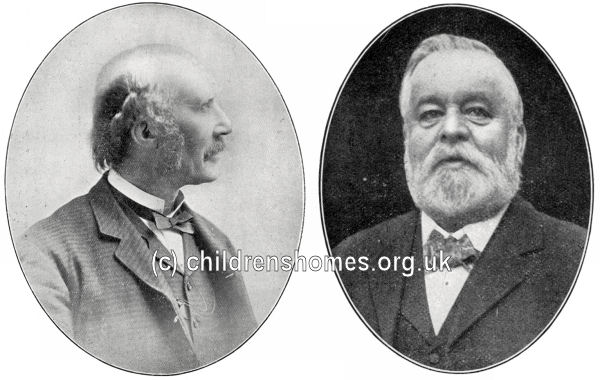
Leonard Shaw (left) and Richard Taylor. © Peter Higginbotham
Early Homes
Shaw and Taylor raised money from local businesses and on 4 January 1870 opened their first home for boys at 16 Quay Street, Deansgate, which had twenty beds. Boys up to 16 years of age were given a bed for the night and found work as office messengers and bootblacks.
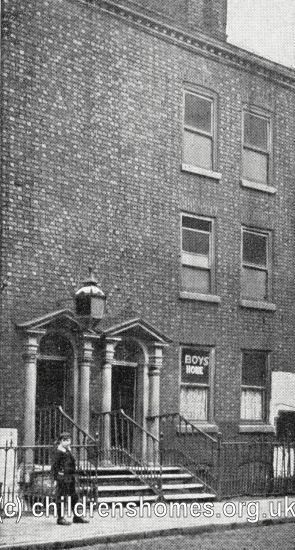
Manchester Refuges first home, 16 Quay Street, 1870. © Peter Higginbotham
In 1871, the home moved to what became known as the No. 1 Central Home (or Central Refuge) on 14 Francis (formerly Frances) Street, Strangeways. The premises, originally formed from four three-storey houses and an adjoining yard, were gradually extended and by 1883 could accommodate up to 120 boys. The location was also the charity's headquarters until 1920 when the site was sold to the Salvation Army for £16,000. It then operated as a Salvation Army hostel until 1986.
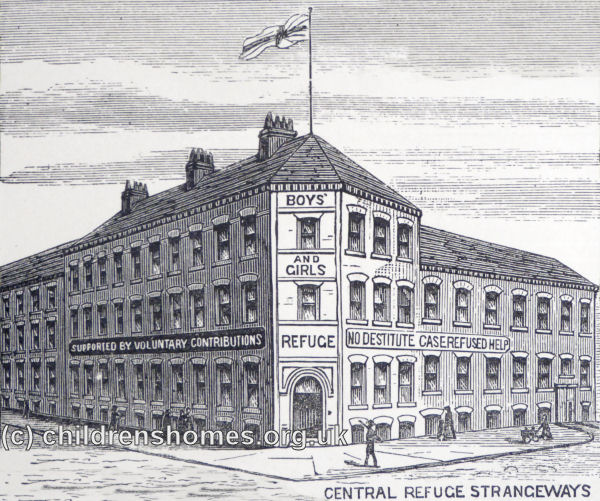
Manchester and Salford Refuges Central Home, Francis Street, from the west, 1880s. © Peter Higginbotham
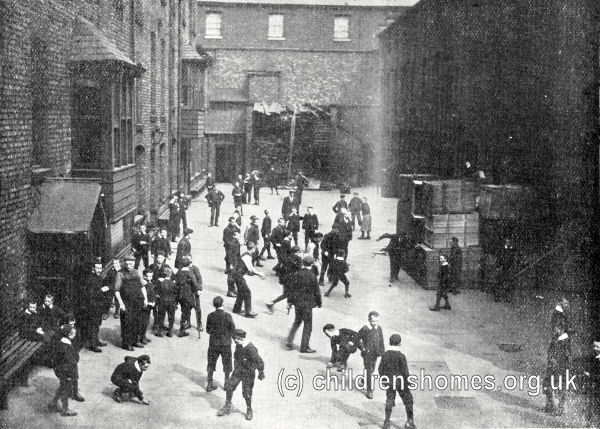
Manchester and Salford Refuges Central Home, Francis Street, boys playing in yard. © Peter Higginbotham
Boys at the Central Refuge could learn the trades of tailoring and shoemaking.
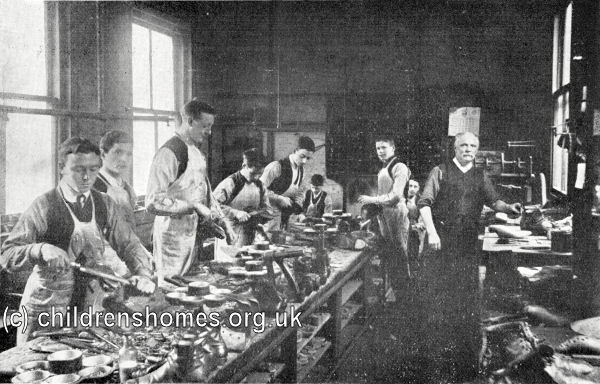
Manchester and Salford Refuges Central Home, boys in shoemaking workshop. © Peter Higginbotham
A boys' band was formed at the refuge. In the picture below, the adults are: Thomas Wright (prison philanthropist, at left), RB Taylor and James Chapman (back row, at right), WT Browne and LK Shaw (second row from back, at right).
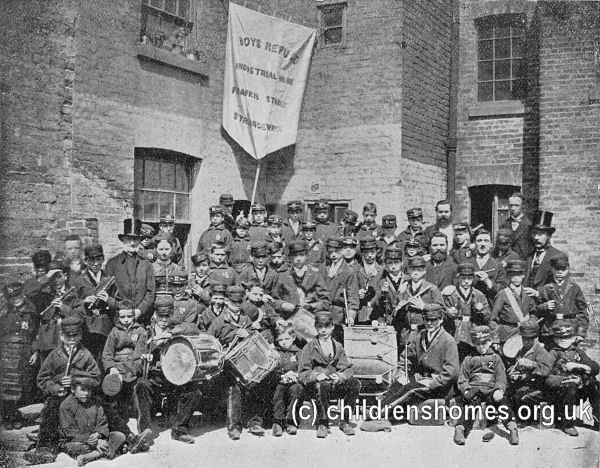
Manchester and Salford Refuges Central Home, Francis Street, boys' band, 1873. © Peter Higginbotham
In 1891, the Boys' Refuge took over the work of the Gordon Boys' Home — a home for delinquent boys on Chester Road, Cornbrook, which had got into difficulties due to financial mismanagement.
The No. 2 Home was opened in 1874 at 214 Lower Broughton Road, Manchester, and housed 17 working boys, aged 14 to 18.
The No. 3 Home, at St John's Place, 107 Great Clowes Street, Lower Broughton, Manchester, was opened in 1876 with similar accommodation to the No. 2 Home.
1876 also saw the opening of the No. 4 Home at 8 Camp Street, Lower Broughton, Manchester. It housed up to 17 homeless boys, aged 14 to 18, mainly those engaged as 'hookers' in cloth warehouses.
In around 1875, a Home for Little Boys — those below the age of 10 — was established at 34-36 Great Ducie Street. In July, 1877, the home moved to new premises at Johnson Street, Queen's Road, Cheetham. The property, formerly two adjacent private houses, had a communal playground but was otherwise run as two separate family-style groups, each with sixteen boys under the care of a matron. The boys attended the St John's day School and St Luke's Sunday School. By 1880, three further homes had been opened on Johnson Street.
An Open-All-Night Children's Shelter was established in 1878 at 14 Major Street, Manchester. It provided temporary accommodation for up to 20 children, aged from 5 to 15, who had been found without proper guardians or suffering under cruel treatment.
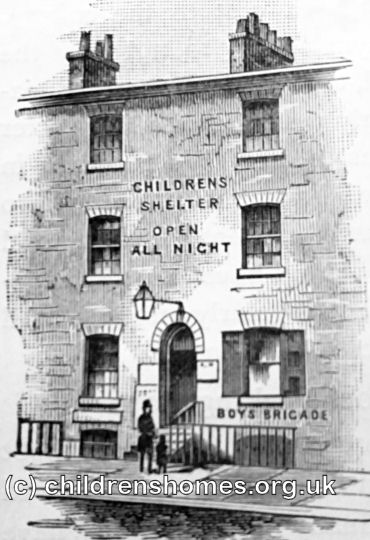
Manchester and Salford Refuges Shelter, 14 Major Street, Manchester, c.1887. © Peter Higginbotham
Also in 1878, an 'Industrial Branch' for 28 girls aged 9 to 16 was opened at 'Heathfield' on Broughton Lane, Manchester. It closed in 1894.
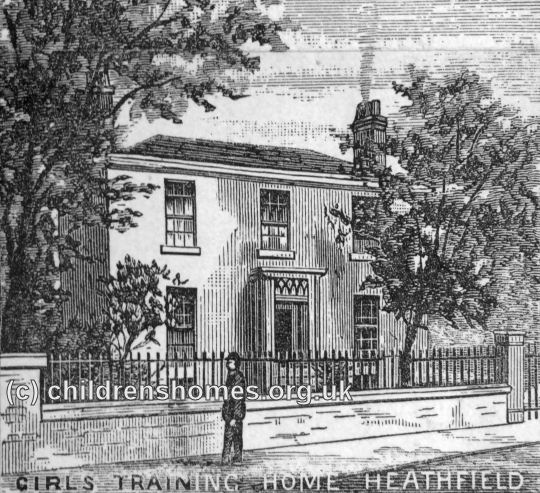
Manchester and Salford Refuges 'Heathfield' Home, Manchester, c.1885. © Peter Higginbotham
On October 26th, 1881, Mr Henry Lee, MP, opened the charity's Boys' Rest, Lodging House and Coffee Room at Angel Meadow. The premises were the former Old Victory Coffee House at the junction of Angel Street and St Michael's Place.
Shoeblack and Messenger Brigades
The work schemes supported by the charity steadily grew to include the City Messenger Brigade, Boy Commissionaires, Newspaper and Shoeblack Brigades, and the Caxton Brigade of Boy Colporteurs. The Caxton Brigade sold cheap and 'pure' literature on the streets, with members paying a small subscription for use of a uniform and use of the Refuge's reading-room and lavatory. Some of the boys in the charity's care were placed on the training ship Indefatigable.
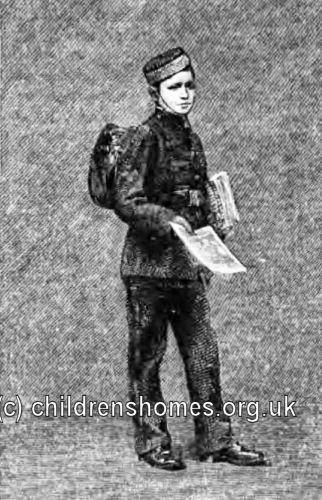
Manchester and Salford Refuges Caxton Brigade member, Manchester, c.1885. © Peter Higginbotham
In around 1890, the Children's Shelter and Messenger Brigade moved to 1 Chatham Street, off Piccadilly. In 1909, however, the charity was given notice to leave the premises, which were to be demolished. After an appeal for funds raised over £8,000, a new building was erected close by at 7 Chatham Street.
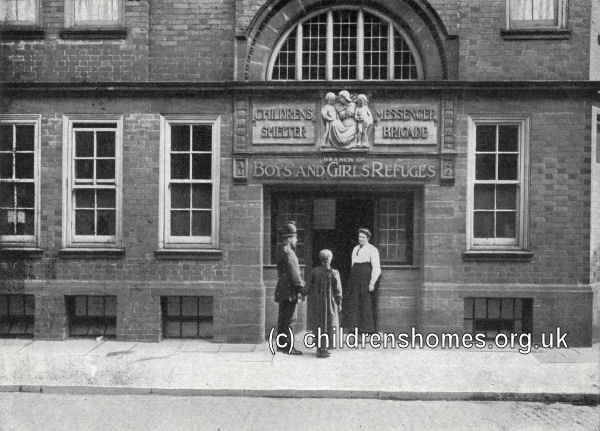
Manchester and Salford Refuges, 7 Chatham Street, main entrance, c.1910. © Peter Higginbotham
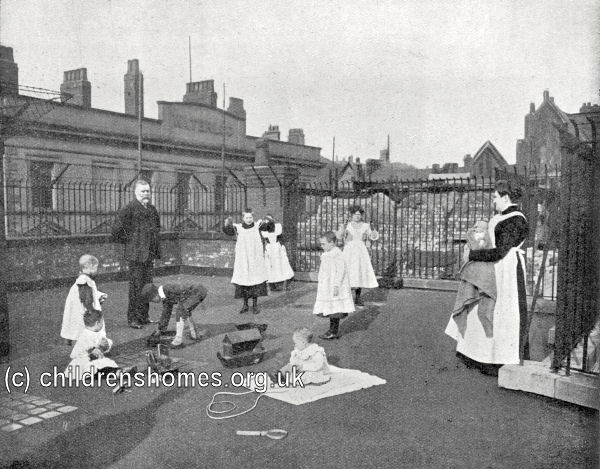
Manchester and Salford Refuges, 7 Chatham Street, rooftop play area, c.1910. © Peter Higginbotham
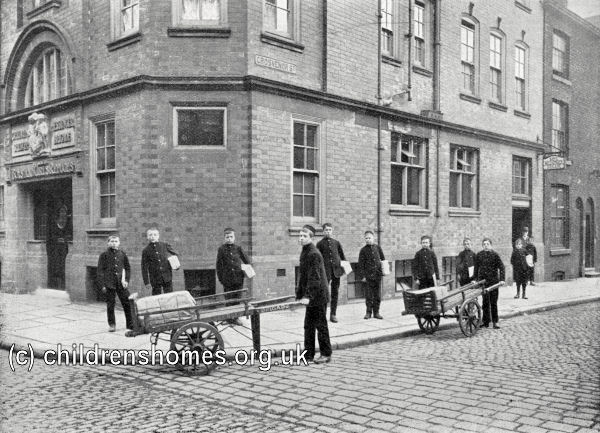
Manchester and Salford Refuges, 7 Chatham Street, messenger and shoeblack brigades, c.1910. © Peter Higginbotham
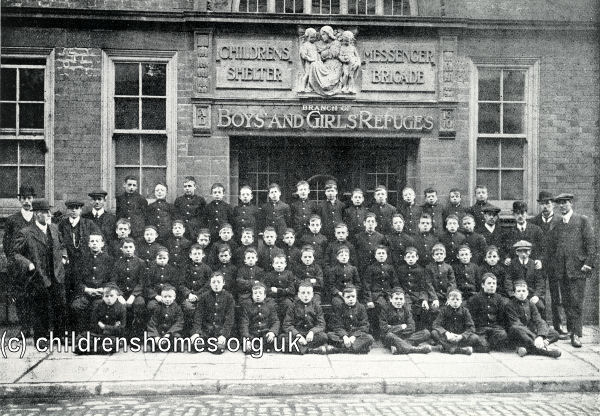
Manchester and Salford Refuges, 7 Chatham Street, messenger and shoeblack brigades, c.1910. © Peter Higginbotham
The new Chatham Street building was also used as remand home for boys who had been charged with a criminal offence. Some of the charity's other boys' accommodation had also previously been used for this purpose.
George Street Homes
On November 11th, 1882, the Bishop of Manchester formally opened new accommodation at numbers 4, 6, 8, 10 and 12 George Street, off Cheetham Hill — what was then described as 'a very healthy and pleasant district'. The first four houses, all for boys, were respectively named the 'Garnett', 'Crossley', 'Atkinson', 'Higgins' and 'Atkinson' homes after benefactors whose gifts had enabled their purchase. The fifth home, for girls, was funded by the girls of Lancashire and Cheshire and named the 'School Girls' home'. A sixth house, number 2, joined the others after its existing tenancy had expired and became a girls' home named 'Langworthy'. The houses, which could each accommodate 16 children, all had playgrounds at the rear rear and small lawns at the front, planted with shrubs. The block was purchased and fitted up at a cost of about £5,000. Children admitted to the homes were required to be under 10 years of age and with both parents dead. Each of the homes was in the charge of a matron who was known to the children as 'mother'.
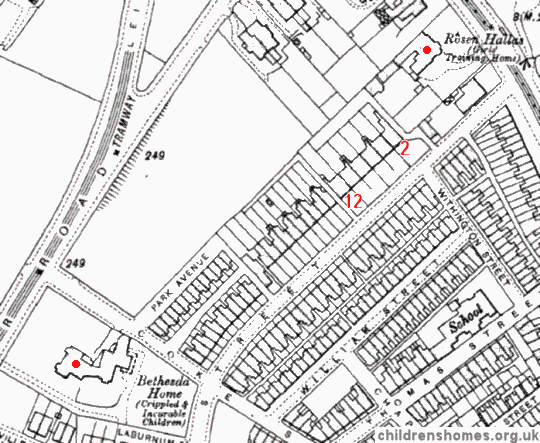
Manchester and Salford Refuges, George Street area, c.1909.
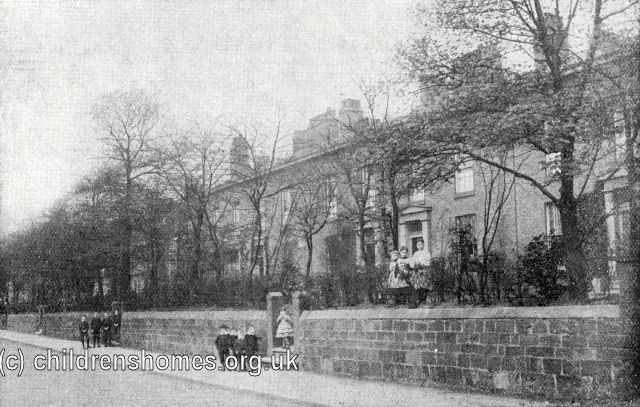
Manchester and Salford Refuges George Street Homes, from the east. © Peter Higginbotham
The Sick and Disabled
In 1883, the charity established its first premises outside Manchester, with the opening of a seaside convalescent home at Lytham, which moved to Old Colwyn in north Wales, in 1915. In 1890, the Home for Crippled and Incurable Children was opened in a property known as Bethesda on Coke Street, Cheetham Hill (see separate page).
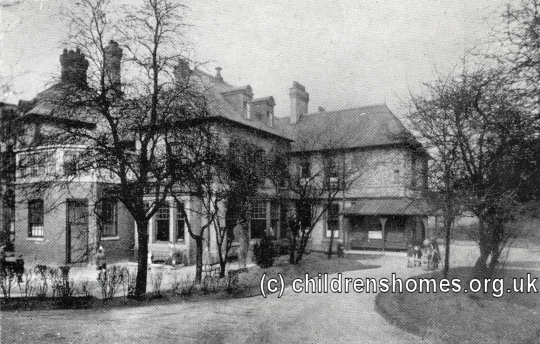
Manchester and Salford Refuges Bethesda Home, Manchester. © Peter Higginbotham
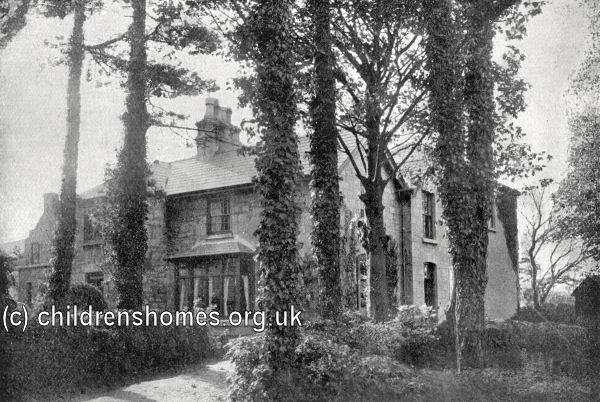
Manchester and Salford Refuges Bethesda Home, Manchester. © Peter Higginbotham
Dr Andrew Boutflower served as a medical officer for the charity for a period of fifty years from its inception.

Manchester and Salford Refuges - Dr Andrew Boutflower. © Peter Higginbotham
Summer Camp
In 1883, an experimental camping expedition was undertaken with twenty poor boys from the city. Two second-hand tents were purchased and the party spent two weeks on the sands at Morecambe Bay. Subsequent venues for the camp were at Blackpool and Llandudno, then Andsell (between Lytham and St Anne's) from 1888 to 1893, and Birkdale, near Southport from 1894. By 1919, almost seventy thousand Manchester children had had a week under canvas.
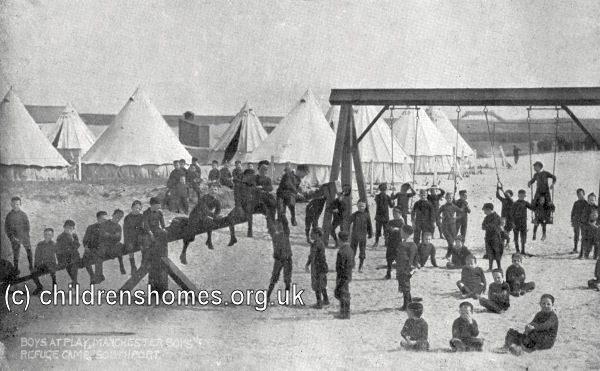
Manchester and Salford Refuges camping at Southport. © Peter Higginbotham
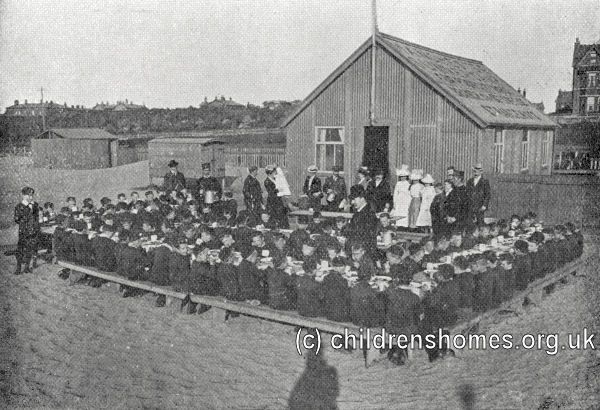
Manchester and Salford Refuges camping at Southport. © Peter Higginbotham
Any child wishing to take part in a summer camp was required to undergo a medical examination beforehand.
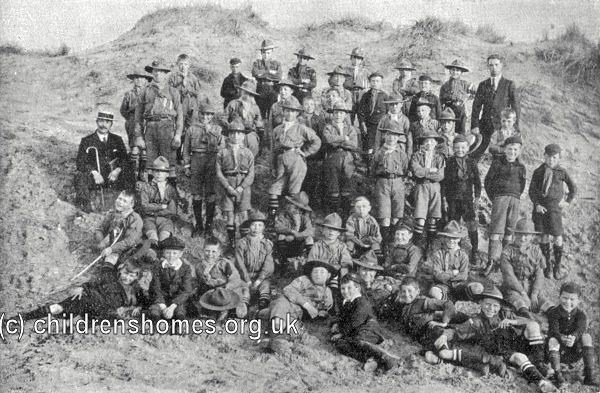
Manchester and Salford Refuges medicals for boys hoping to attend summer camp. © Peter Higginbotham
The Boys' Refuge established its own Boy Scouts troop which also went on summer camp.
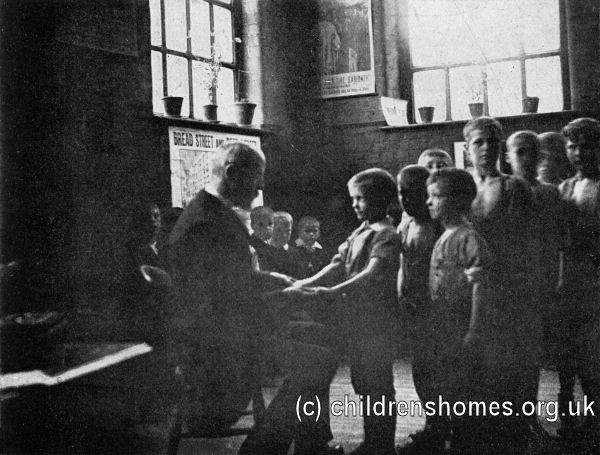
Manchester and Salford Refuges camping at Southport. © Peter Higginbotham
Emigration
In 1872, the charity emigrated nine of the boys in its care to the Marchmont Receiving Home at Belleville, Ontario. In 1891, to prepare children for a future in Canada, a boys' emigration home was established in 1891 on Great Ducie Street.
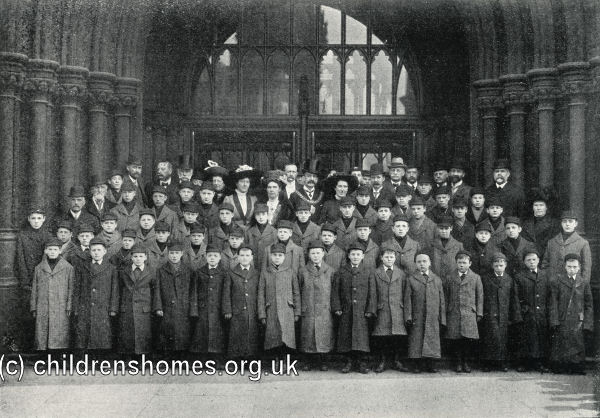
Manchester and Salford Refuges pre-emigration group at Manchester Town Hall. © Peter Higginbotham
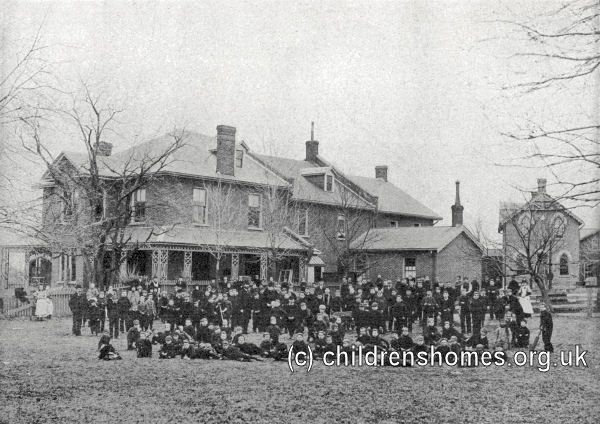
Boys from the Manchester and Salford Refuges at Marchmont. © Peter Higginbotham

Manchester and Salford Refuges pre-emigration group at Manchester Town Hall. © Peter Higginbotham
In March 1883, the American evangelist, Dwight L. Moody, paid a visit to the George Street homes. A few days later he proposed that twelve of the boys be selected to be sent out to his Training Homes at Northfield, Massachusetts, with a view to being prepared for ministerial or mission work. The offer was accepted and, on 30 May, the chosen boys, accompanied by Leonard Shaw, set sail for for America.
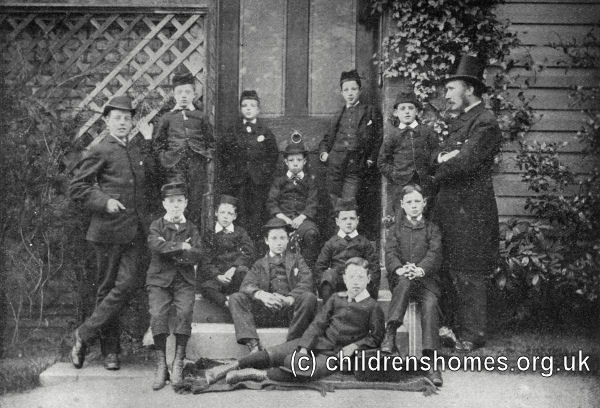
Manchester and Salford Refuges pre-emigration group at Manchester Town Hall. © Peter Higginbotham
Rosen Hallas
A training and emigration home for girls, known as Rosen Hallas, was opened in 1886 at the corner of George Street and Cheetham Hill. (A source in 1896 refers to it as being 'for boys and, occasionally, girls.') The majority of the girls went into domestic service in the local area but a number were emigrated to Canada. An adjacent cottage was used as a convalescent home. The buildings were sold in 1922 to Higher Crumpsall Hebrew Congregation for £2,300.
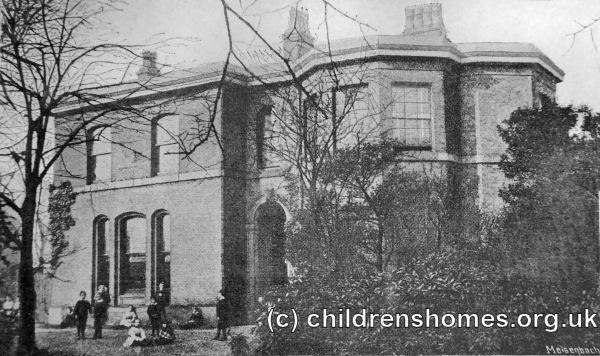
Manchester and Salford Refuges Rosen Hallas Home, Manchester, c.1887. © Peter Higginbotham
Rosen Hallas hosted an annual gathering for former inmates.
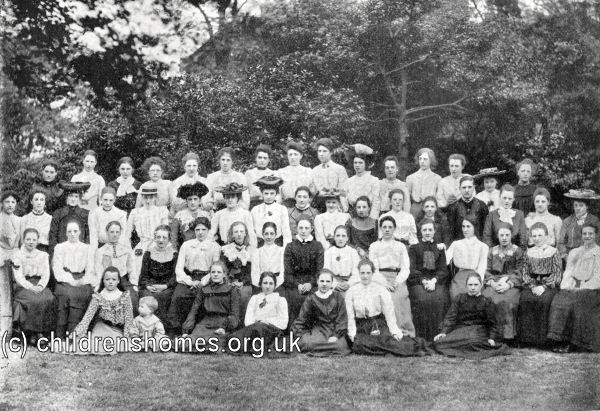
Manchester and Salford Refuges Rosen Hallas Home old-girls' gathering. © Peter Higginbotham
Great Ducie Street Homes
In 1890, a block of properties at 68 to 80 Great Ducie Street was taken over by the charity, close to the Central Refuge for Boys on Francis Street. The block housed the Boys' Refuge Depot (stores for the Refuge), the Boy's Emigration Training Home, a Brigade Boys' Home (for boys working in the Shoeblack and Messenger Brigades), and a new Working Boys' Home to replace the old homes at Lower Broughton.
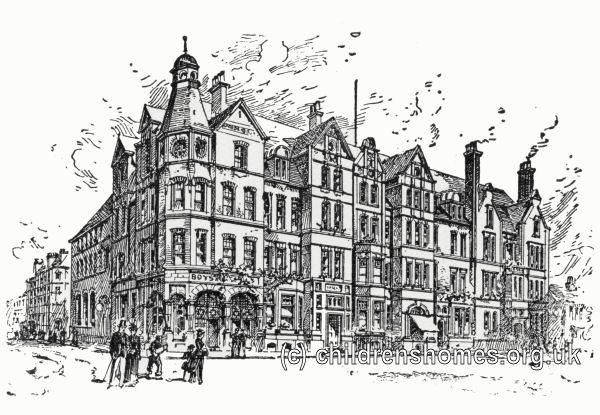
Manchester and Salford Refuges 68-80 Great Ducie Street, 1890s. © Peter Higginbotham
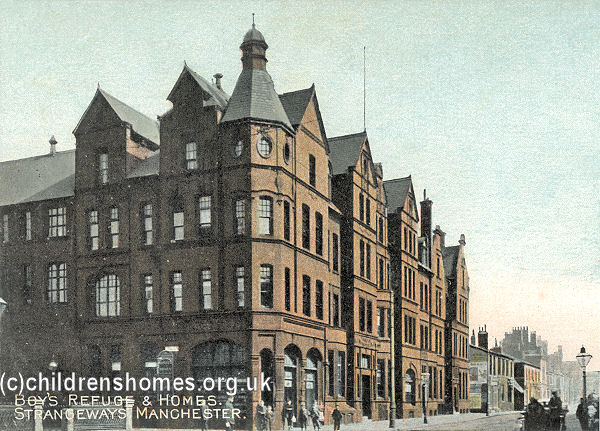
Manchester and Salford Refuges 68-80 Great Ducie Street, 1907. © Peter Higginbotham
The shoeblack and messenger brigades moved to the new Chatham Street building in 1910. During the First World War, the Great Ducie Street premises were taken over for use as a war hospital. The working lads home subsequently moved to George Street.
The Chatham Street premises continued in use until 1944, when the building was sold off.
Tetlow Grove House
Another new home was opened in 1896 at Tetlow Grove House, Cheetham Hill, to house up to 20 motherless children, aged from 5 to 15 years. Motherless children were a group for whom relatively little provision existed. Many of the children at the home were subsequently able to return to their fathers, perhaps following a remarriage. By 1904, the service had been transferred to the Higgins Home on George Street.
Belmont House
In 1920, the proceeds from the sale of the Central Refuge allowed the charity to begin creation of the Children's Garden Village on the Belmont House estate at Cheadle, where the facilities included a sanatorium and recreation hall.
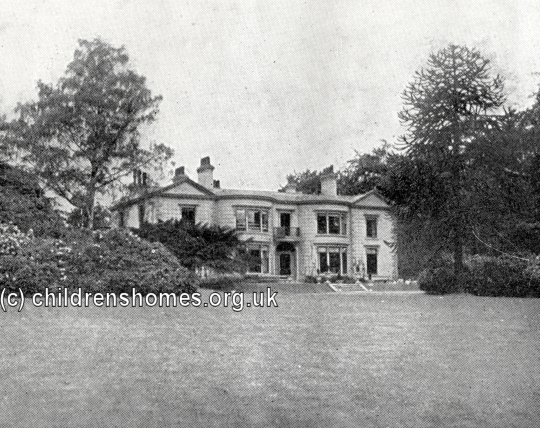
Belmont House, Cheadle, c.1950. © Peter Higginbotham
Post-WW2 Developments
After the Second War, the general trend towards smaller, community-based family-group homes led the charity eventually to establish four of these, namely: Linden, 64 Station Road, Cheadle Hulme (1958); Lerryn, 66 Parsonage Road, Heaton Moor, Stockport (1960); Highlea, 1 Crossacres Road, Gatley, Stockport (1963); and Lockhart House, 51 Parsonage Road, Didsbury. These were partly funded by the sale of property from Manchester's Jubilee School, a struggling charity which the charity took over in 1958. In the same year, the Bethesda Home moved out from Leicester Road to make use of growing amount of vacant space at the Belmont site.
Lockhart House, Withington
For many years, the taxi drivers in Manchester organised an annual outing for the Refuges' children.
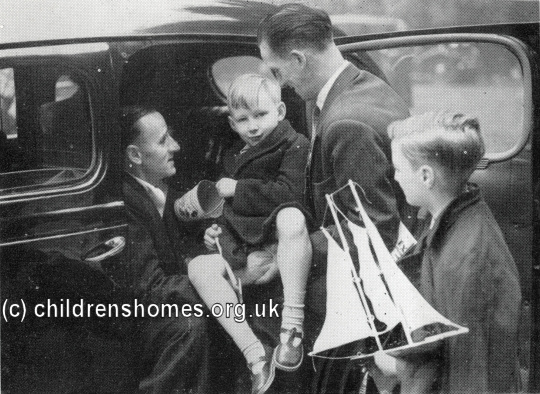
Manchester and Salford Refuges taxi drivers' outing, Manchester, c.1950. © Peter Higginbotham
In 1960, the organisation changed its name to the Boys' and Girls' Welfare Society and in 1966 merged with the Invalid Children's Aid Association through which it acquired inherited the Taxal Edge Convalescent Home on Macclesfield Road, Whaley Bridge. Belmont House was disposed of in 1983 owing to financial difficulties.
Renamed the Together Trust in 2005, the charity now offers care, support and special education to children, adults and families, including those with particular physical, behavioural or learning difficulties.
Records
Note: many repositories impose a closure period of up to 100 years for records identifying individuals. Before travelling a long distance, always check that the records you want to consult will be available.
- Former residents of the Together Trust — formerly known as the Manchester and Salford Boys' and Girls' Refuges and Homes (1870-1959) then the Boys' and Girls' Welfare Society (1960-2005) — may access their records, as can relatives of deceased former residents. For details on how to do this, visit the charity's Access to Information web page.
Census
Bibliography
- Higginbotham, Peter Children's Homes: A History of Institutional Care for Britain s Young (2017, Pen & Sword)
Links
Except where indicated, this page () © Peter Higginbotham. Contents may not be reproduced without permission.


